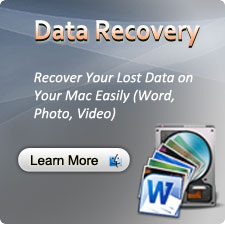Information about Data Recovery and Steps for Data Recovery
If you want to know how to recover the data you lost or deleted from your computer, you need to learn more about data recovery. Data recovery is the process of salvaging data from damaged, failed, corrupted, or inaccessible secondary storage media when it cannot be accessed normally. Often the data are being salvaged from storage media such as internal or external hard disk drives, solid-state drives (SSD), USB flash drive, storage tapes, CDs, DVDs, RAID, and other electronics. Recovery may be required due to physical damage to the storage device or logical damage to the file system that prevents it from being mounted by the host operating system.
The most common "data recovery" scenario involves an operating system (OS) failure (typically on a single-disk, single-partition, single-OS system), in which case the goal is simply to copy all wanted files to another disk. This can be easily accomplished using a Live CD, many of which provide a means to mount the system drive and backup disks or removable media, and to move the files from the system disk to the backup media with a file manager or optical disc authoring software. Such cases can often be mitigated by disk partitioning and consistently storing valuable data files (or copies of them) on a different partition from the replaceable OS system files.
Another scenario involves a disk-level failure, such as a compromised file system or disk partition, or a hard disk failure. In any of these cases, the data cannot be easily read. Depending on the situation, solutions involve repairing the file system, partition table or master boot record, or hard disk recovery techniques ranging from software-based recovery of corrupted data, hardware-software based recovery of damaged service areas (also known as the hard drive's "firmware"), to hardware replacement on a physically damaged disk. If hard disk recovery is necessary, the disk itself has typically failed permanently, and the focus is rather on a one-time recovery, salvaging whatever data can be read.
In a third scenario, files have been "deleted" from a storage medium. Typically, the contents of deleted files are not removed immediately from the drive; instead, references to them in the directory structure are removed, and the space they occupy is made available for later overwriting. In the meantime, the original file contents remain, often in a number of disconnected fragments, and may be recoverable.
Steps for Data Recovery
Once you find the data loss happened on your computer, the first thing you should keep in mind is that don’t put any new files into the drive which your lost files were stored before to avoid the data overwritten situation.
Make sure the above information, then you may need a powerful data recovery tool to recover lost files. To help you more, here we suggest you to have a try on uFlysoft Data Recovery software, just follow the easy 3 steps below. (Here we use Mac as an example to show you to “3-Step” operation.)
First of all, install uflysoft Data Recovery for Mac on your Mac and connect your camera to your Mac.
Secondly, launch the program. A dialog box will pop up and guide you to start scan first. (If you want to recover lost files from your storage device just connect it with your Mac.)
Finally, After scanning is finished, click “Recovery” button. And you will find all the data come back to you again just in a few minutes.
Not difficult, right? More detailed steps or info are in this article, feel free to read it on our official website.